Introduction
CIERA’s Scientific Advisory Board consists of astronomers with a record of exceptional scientific work, expertise, and international leadership. The goal of the Board is to provide an external view on the trajectory of CIERA’s work, to ensure we continue to advance scientifically and foster an equitable and collaborative environment at the forefront of modern astronomy.
Science Advisory Board
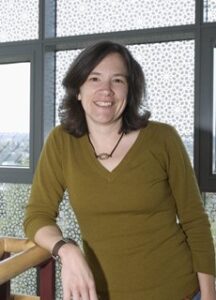 |
Julianne DalcantonDirector of the Center for Computational Astrophysics at the Flatiron Institute Dalcanton received her Ph.D. in astrophysical sciences from Princeton University. Before joining the Simons Foundation in 2021, Dalcanton held a postdoctoral position at the Observatories of the Carnegie Institution of Washington and a faculty position at the University of Washington. Dalcanton is one of the largest single users of the Hubble Space Telescope, serving as principal investigator of a large HST Multicycle Treasury, and is well known for her discovery of the comet C/1999 F2 Dalcanton. She has been elected as a Fellow of the American Academy of Arts and Sciences and has been honored with numerous prizes and awards, including the Beatrice M. Tinsley Prize and the naming of Asteroid 148384 Dalcanton in her honor. |
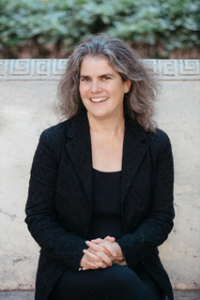 |
Andrea GhezLauren B. Leichtman & Arthur E. Levine chair in Astrophysics at University of California, Los Angeles Ghez received her Ph.D. from the California Institute of Technology. Before joining the University of California, Los Angeles, in 1994, Ghez held a Hubble postdoctoral fellowship at the University of Arizona. Ghez heads UCLA’s Galactic Center Group and is best known for her ground-breaking work on the center of our Galaxy, which has led to the best evidence to date for the existence of supermassive black holes. She has been elected as a Fellow of the American Astronomical Society, the American Physical Society, the American Philosophical Society, the American Academy of Arts and Sciences, and the National Academy of Sciences and has been honored with numerous prizes and awards, including a share of the Nobel Prize in Physics in 2020 for providing conclusive experimental evidence of a supermassive compact object in the Milky Way’s galactic center. |
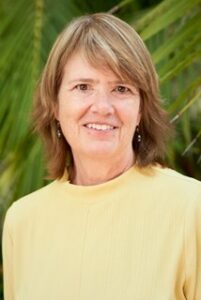 |
Fiona HarrisonHarold A. Rosen Professor of Physics & Kent and Joyce Kresa Leadership Chair, Division of Physics, Mathematics and Astronomy at the California Institute of Technology Harrison received her Ph.D. from the University of California, Berkeley. Before joining the California Institute of Technology faculty in 1995, Harrison held a Millikan postdoctoral fellowship. Harrison is the Principal Investigator on the Nuclear Spectroscopic Telescope Array (NuSTAR) mission, receiving the Hans Bethe Prize in 2020 for her work, and focuses her research on developing new optics and detectors for high-energy astrophysics and using current NASA missions combined with Caltech’s optical telescopes to study energetic phenomena. She has been elected as a Fellow of the American Astronomical Society, the American Physical Society, the American Academy of Arts and Sciences, and the National Academy of Sciences, and has been honored by numerous prizes and awards, including the Bruno Rossi Prize. Harrison was appointed to serve as co-chair of the National Academies Astronomy and Astrophysics 2020 Decadal Survey committee. |
 |
Ray JayawardhanaProvost and Professor of Physics and Astronomy at Johns Hopkins University Jayawardhana received his Ph.D. in astronomy from Harvard University. Before being selected as Johns Hopkins University’s 16th Provost, he served as Dean of Cornell University’s College of Arts and Sciences. Prior to this, Jayawardhana held a Miller Research Fellowship at the University of California, Berkeley, and faculty positions at the University of Michigan and the University of Toronto, also serving as the Dean of Science at York University. Jayawardhana is a core science team member for the NIRISS instrument on the James Webb Space Telescope (JWST), his group leading a Gemini Observatory large program on high-resolution spectroscopy of exoplanet atmospheres, and is widely known as an acclaimed writer. He has been honored with numerous prizes and awards, including the Rutherford Medal, the Carl Sagan Medal, and CSWA Science in Society Book Award in 2014 for his book Neutrino Hunters. Jayawardhana also serves on the Board of Trustees for the Alfred P. Sloan Foundation. |
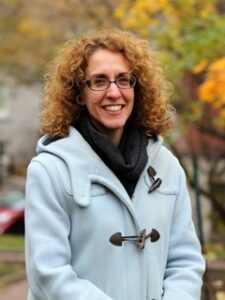 |
Vicky KaspiDirector of the Trottier Space Institute and Professor of Physics at McGill University Kaspi received her Ph.D. from Princeton University. Before joining McGill University in 1999, Kaspi held a Hubble postdoctoral fellowship at the California Institute of Technology and Jet Propulsion Laboratory and a faculty position at the Massachusetts Institute of Technology. Kaspi’s research focuses on observational studies of neutron stars, using radio and X-ray telescopes to study pulsars and Fast Radio Bursts, and she dedicates much of her time to mentoring students and early-career scientists. She has been elected as a Fellow to the Royal Society of London, the Royal Society of Canada, the American Physical Society, the American Astronomical Society, the American Academy of Arts and Sciences, and the National Academy of Sciences, and has been honored by numerous prizes and awards, including the Royal Society Bakerian Medal and the Shaw Prize in Astronomy. |
 |
Robert KirshnerClowes Research Professor of Science at Harvard University and Executive Director of the Thirty Meter Telescope International Observatory (TIO) Kirshner received his Ph.D. from the California Institute of Technology where he has been named a Distinguished Alumnus. Before joining Harvard University in 1986, Kirshner held a postdoctoral position at the Kitt Peak National Observatory and became chair of Astronomy at the University of Michigan. In 2015, he became Chief Program Officer for Science at the Gordon and Betty Moore Foundation and, in Spring 2022, Kirshner was named Executive Director of the Thirty Meter Telescope International Observatory. His work on the discovery of cosmic acceleration is chronicled in “The Extravagant Universe: exploding stars, dark energy, and the accelerating cosmos.” He has been elected as a Fellow of the American Astronomical Society, the American Physical Society, the American Academy of Arts and Sciences, the American Philosophical Society, and the National Academy of Sciences. He has been honored with numerous prizes and awards, including the James Craig Watson Medal, the Wolf Prize in Physics, and the Dannie Heineman Prize for Astrophysics. |
 |
Angela OlintoProvost and Professor of Astronomy and of Physics at Columbia UniversityOlinto received her Ph.D. from the Massachusetts Institute of Technology and held a postdoctoral position at the Fermilab Theoretical Astrophysics Group. Before joining Columbia University in 2024, Olinto served as the Dean of the Physical Sciences Division and a Professor in the Department of Astronomy and Astrophysics and the Enrico Fermi Institute at the University of Chicago. Olinto is the Principal Investigator of the POEMMA (Probe Of Extreme Multi-Messenger Astrophysics) space mission and the EUSO (Extreme Universe Space Observatory) on a super pressure balloon (SPB) mission, and was a member of the Pierre Auger Observatory. She is best known for her contributions to the study of the structure of neutron stars, primordial |
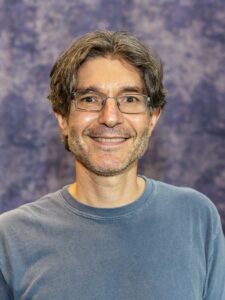 |
Eliot QuataertCharles A. Young Professor of Astronomy at Princeton University Quataert received his Ph.D. from Harvard University. Before joining Princeton University in 2020, Quataert held a postdoctoral position at the Institute for Advanced Study and a faculty position at the University of California, Berkeley. He has a wide variety of research interests, including black holes, stars, plasma astrophysics, and galaxy formation. Quataert dedicates much of his time to mentoring students and early career scientists. He has been elected as a Fellow of the American Physical Society, the American Academy of Arts and Sciences, and the National Academy of Sciences, and honored by the Helen B. Warner Prize for Astronomy and the Donald Sterling Noyce Prize for Excellence in Undergraduate Teaching and named one of the first Simons Investigators by the Simons Foundation. |
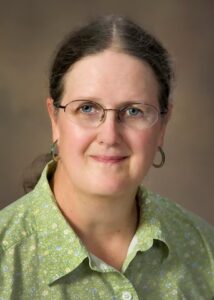 |
Marcia RiekeRegents’ Professor of Astronomy, Astronomer and Elizabeth Roemer Endowed Chair at University of Arizona and Steward Observatory Rieke received her Ph.D. from the Massachusetts Institute of Technology. Before joining the University of Arizona as faculty, Rieke held a postdoctoral fellowship position at the University of Arizona in 1976. Her research interests include infrared observations and she is best known as the Principal Investigator on the near-infrared camera (NIRCam) for the James Webb Space Telescope (JWST). She has been elected as a Fellow of the American Astronomical Society, the American Academy of Arts and Sciences, and the National Academy of Sciences, and has been honored with numerous prizes and awards, including NASA’s Exceptional Public Service Medal. |
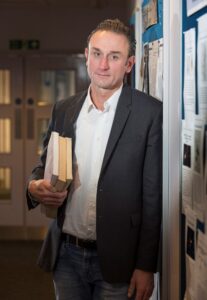 |
Alberto VecchioDirector of the Institute for Gravitational Wave Astronomy, Professor of Astrophysics at the University of Birmingham Vecchio received his Ph.D. in astronomy from the Universita’ di Milano, Italy. Before joining the University of Birmingham in 2001, he held post-doctoral positions at Cardiff University and the Albert-Einstein-Institut (Max-Planck-Institut fuer Gravitationsphysik). Vecchio heads the University of Birmingham’s Astrophysics and Space Research and is the founding Director of the Institute for Gravitational Wave Astronomy. Vecchio’s research focuses on gravitational-wave physics, observations across the gravitational-wave spectrum, and instrument development for ground-based laser interferometers. He is a member of the LIGO team that detected gravitational waves in 2015 and has been honored with several awards and prizes, including being co-recipient of the 2016 Special Breakthrough Prize in Fundamental Physics. He is a Royal Society Wolfson Fellow and Turing Fellow.
|

